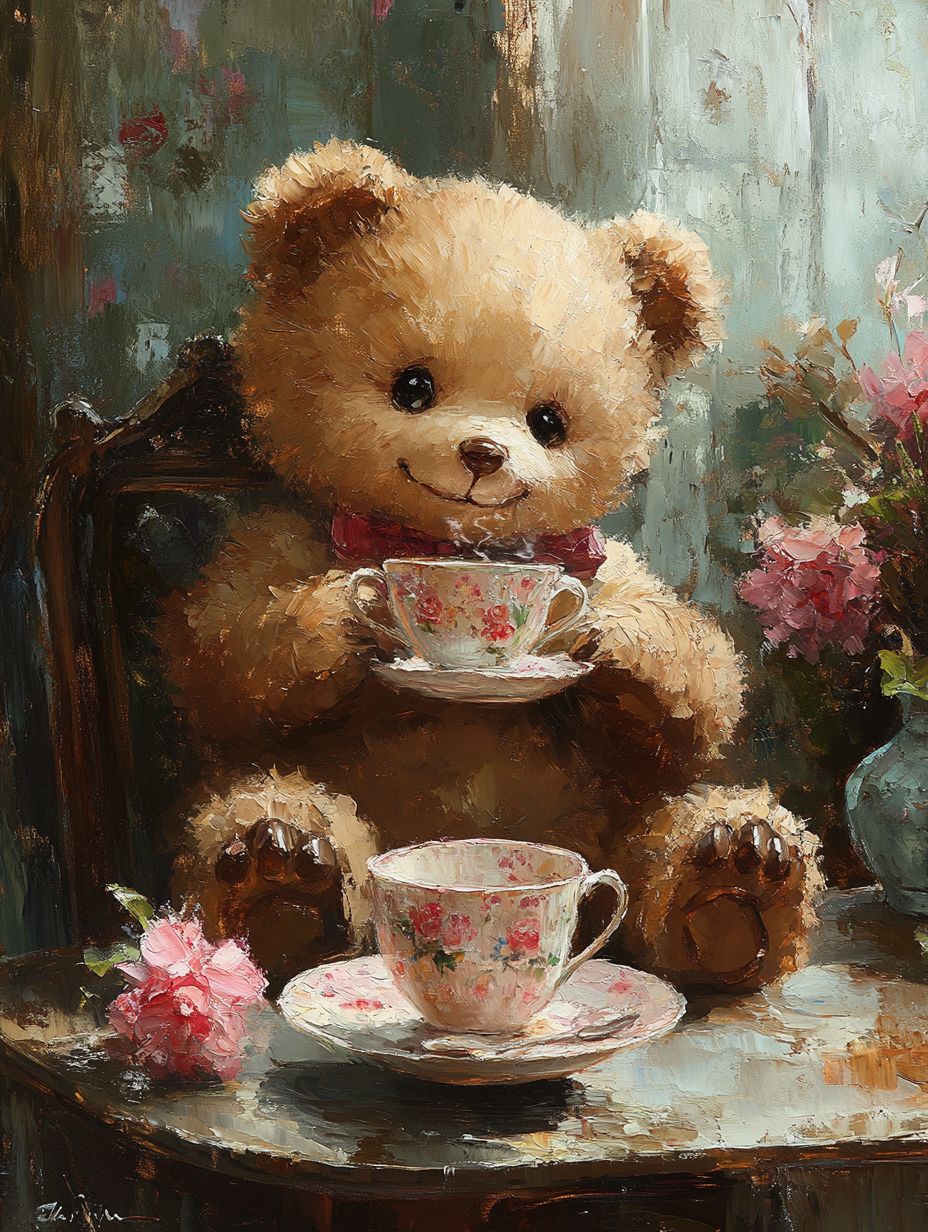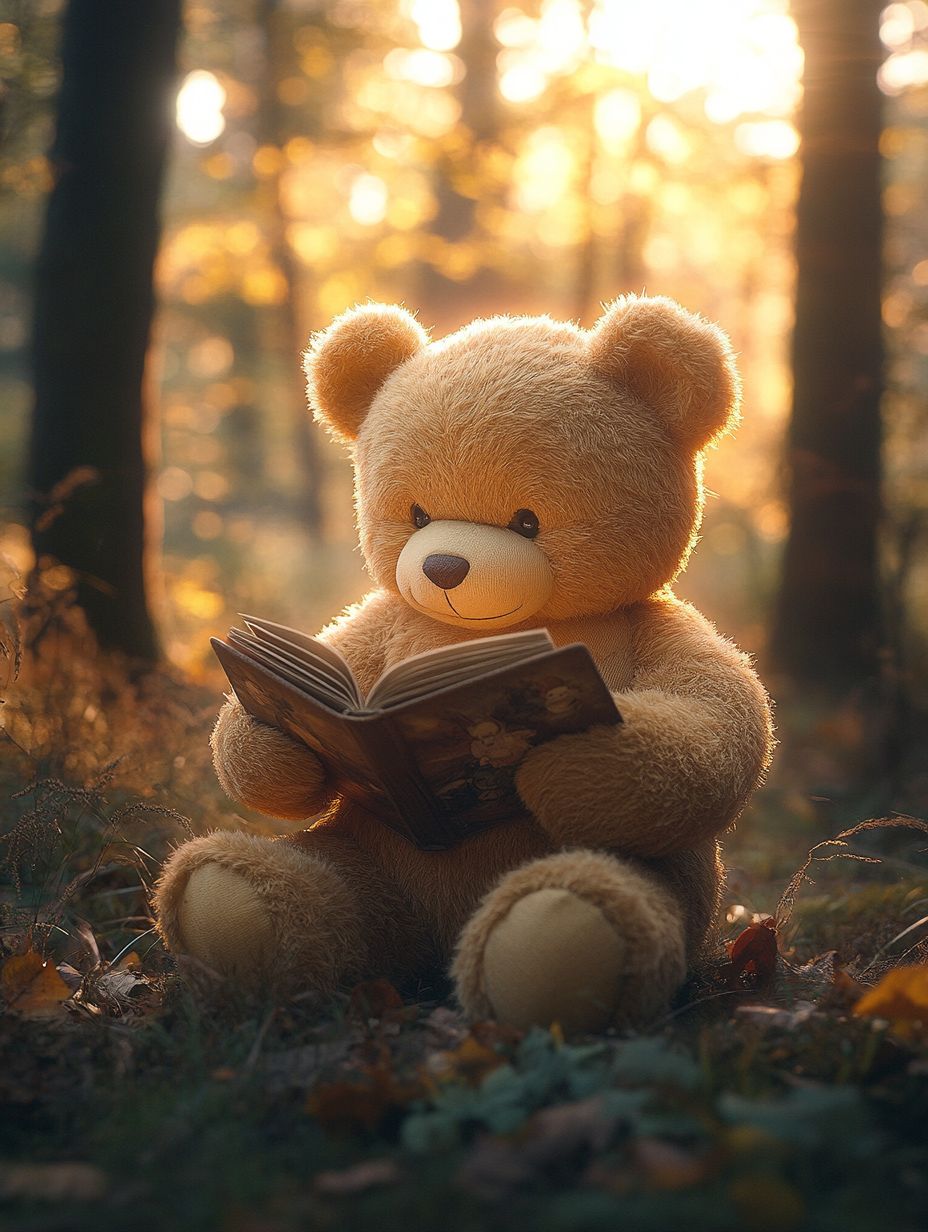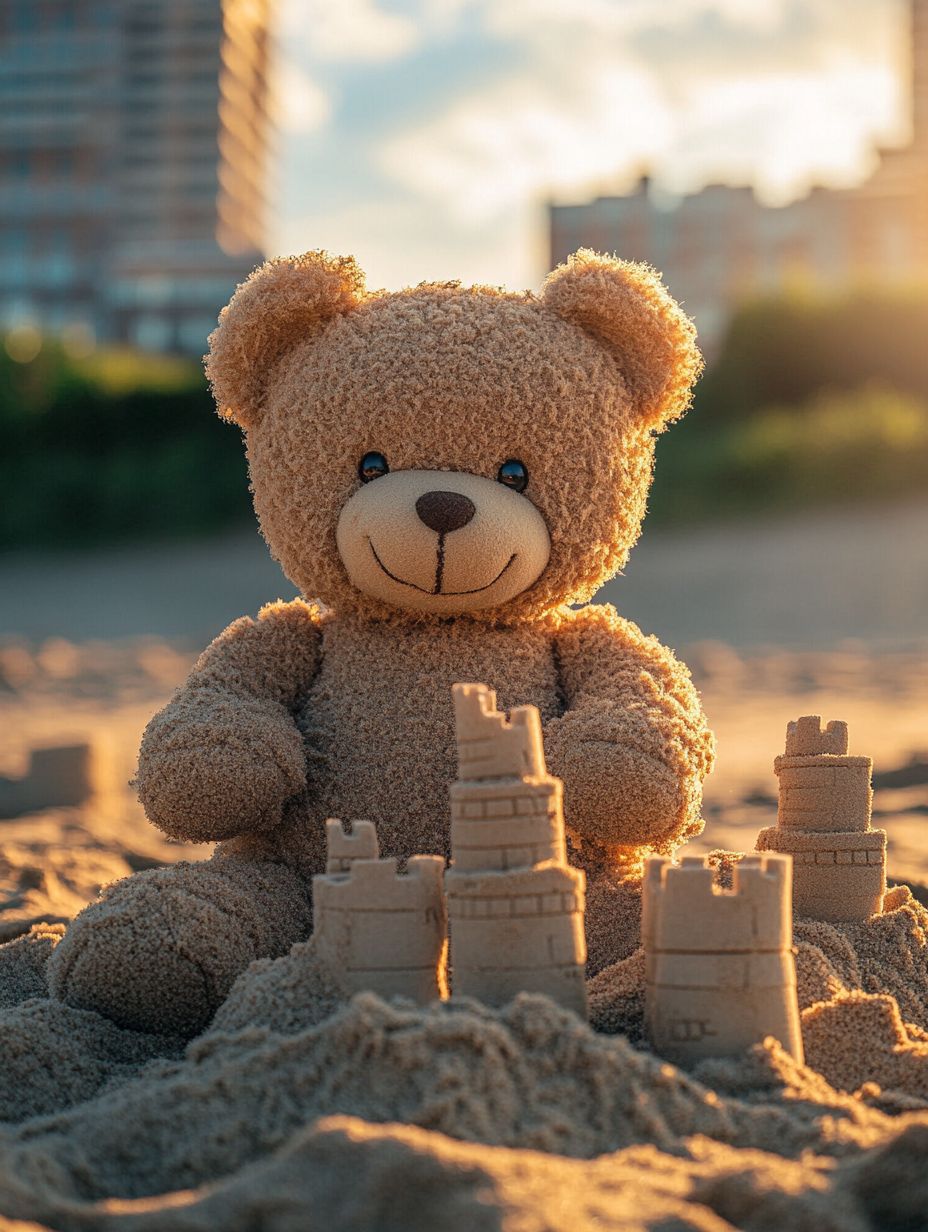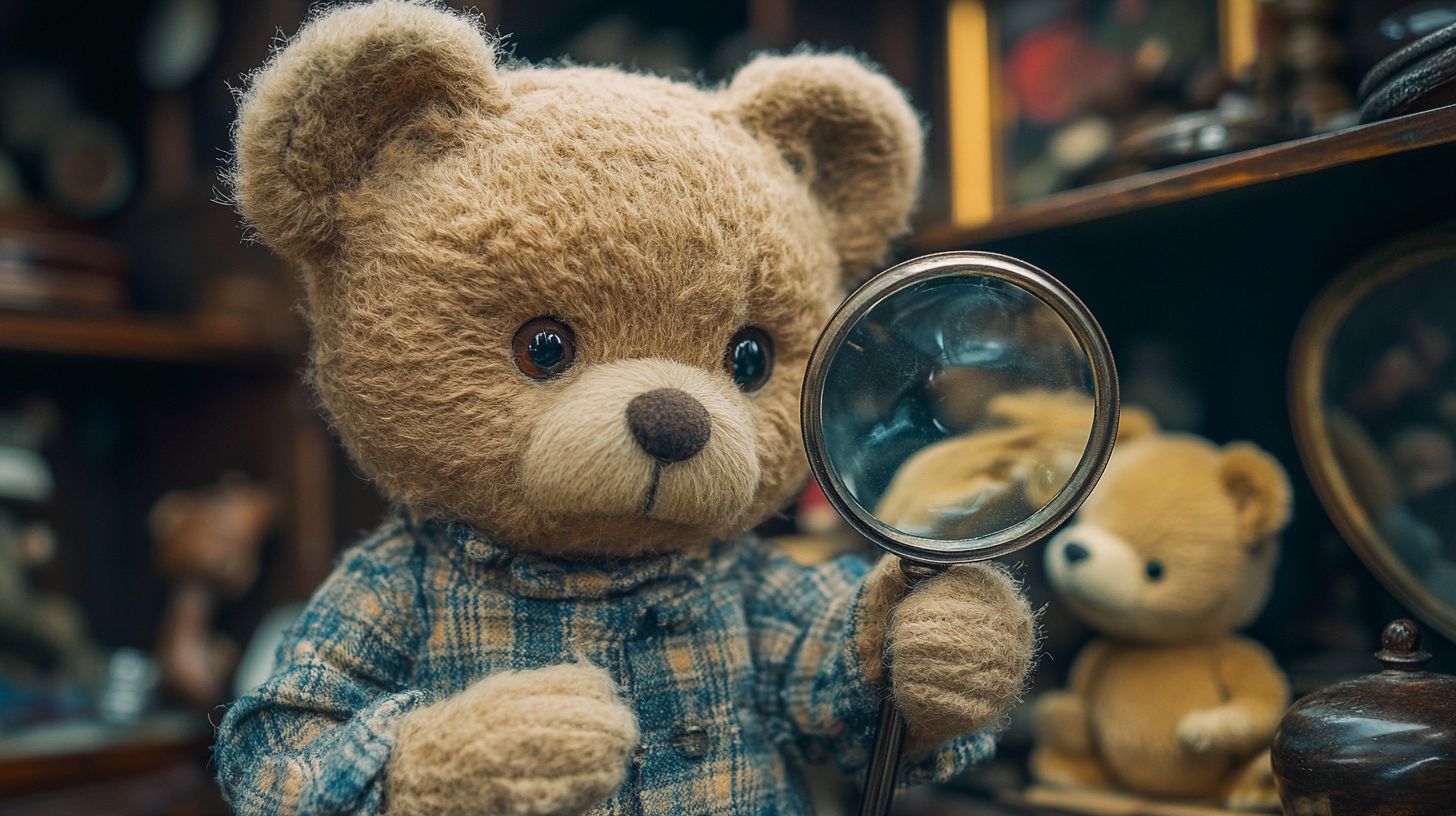Teddy bears have become rather special in British life, weaving their way through every corner of society – from posh nurseries in Chelsea to modest flats in Manchester. There's something quintessentially British about these furry companions, who've sparked some of our most beloved literary characters. Winnie-the-Pooh pottering about in the Hundred Acre Wood and Paddington Bear with his marmalade sandwiches spring to mind.
Mind you, it's not just in books where these cuddly chaps shine. They've been faithful companions at countless afternoon teas, tagged along on blustery seaside holidays, and found themselves tucked into Christmas stockings nationwide. Rather telling that even the Royal Family can't resist their charm – who could forget the tale of Prince Charles taking his trusted bear to Cambridge?
The collecting scene's quite fascinating, really. Those Victorian-era Steiff bears sometimes fetch astronomical sums at places like Christie's – we're talking thousands of pounds sterling. Yet it's not all about the valuable antiques. Whether it's a cherished childhood friend gone a bit threadbare or a modern limited edition piece, each bear tells its own bit of British social history. Quite remarkable how these stuffed companions have managed to capture our hearts for well over a century now.
Key Takeaways
Anyone who's spent time in British homes knows that teddy bears hold a rather special place in our hearts. These beloved companions often sit proudly on beds and armchairs, gathering stories as they're handed down from parent to child. It's quite remarkable how a particularly cherished bear becomes part of the family tapestry, complete with its own peculiar name and perhaps a slightly threadbare patch or two.
The collecting scene is absolutely fascinating. While some enthusiasts chase after the prestigious Steiff bears, which can fetch eye-watering sums at Christie's – we're talking thousands of pounds – others prefer the charm of well-loved bears from the 1950s and 60s. These vintage chaps, often found at car boot sales or tucked away in charity shops, tell their own wonderful tales.
One can't help but notice the Royal Family's fondness for these cuddly companions. From Queen Victoria's era right through to today's young princes and princesses, teddy bears have remained steadfast favourites at the palace. Rather lovely, really, how something so simple can bridge the gap between crown and commoner.
Our literary bears have become proper national treasures. Paddington, with his duffle coat and marmalade sandwiches, represents the very best of British hospitality, while dear old Pooh reminds us of lazy summer afternoons in the Hundred Acre Wood. These characters have rather cleverly worked their way into our collective imagination.
Come Christmas time, you'll hardly find a stocking without a teddy peeping out the top, and many a British child wouldn't dream of heading off on their summer hols without their furry friend in tow. Whether it's a posh bear from Harrods or a treasured hand-me-down, these steadfast chums remain an essential part of growing up British.
Britain's Most Cherished Childhood Companions

There's something rather special about Britain's enduring love affair with teddy bears. From cosy cottages in the Cotswolds to tenement flats in Glasgow, these fuzzy companions have been comforting little ones for generations.
While modern toy shops might be stuffed to the rafters with mass-produced bears, it's often the slightly threadbare family heirloom, passed down through the years, that claims pride of place in children's hearts.
Most British households harbour at least one cherished bear, typically sporting a rather worn bow tie or a slightly wonky ribbon. These steadfast chums turn up at countless tea parties, picnics and primary school show-and-tell sessions, where they're introduced with all the pomp and circumstance befitting such distinguished family members.
Though traditional names like Edward and Victoria still pop up regularly, you're just as likely nowadays to meet a bear christened after someone from CBeebies or CBBC.
The remarkable thing about these furry friends is their staying power. Long after other childhood toys have been relegated to charity shops or car boot sales, beloved teddies often find themselves carefully tucked away in memory boxes or proudly presented to the next generation.
While Hamleys might offer the latest must-have bear for fifteen quid, you simply can't put a price on the tatty old fellow who's seen you through chicken pox, school exams and first heartbreaks.
Royal Family's Teddy Bear Legacy

The British Royal Family's fondness for teddy bears tells quite a charming story, stretching all the way back to Queen Victoria's time.
Perhaps most famously, Prince Charles kept his treasured bear through his Cambridge days – a rather endearing detail that sparked plenty of good-natured press coverage. These days, little Princess Charlotte has amassed quite the collection herself, carrying on this delightful tradition.
Peek into any royal nursery throughout history and you'll spot these cherished companions.
The Queen's childhood bear, a particularly splendid mohair creation from J.K. Farnell & Co., actually inspired something rather special – A.A. Milne's beloved Winnie-the-Pooh tales. When Prince George arrived, he was welcomed with a rather posh £95 limited-edition Merrythought bear, which seems rather fitting for a future monarch.
The market for royal bears has become remarkably interesting.
At Christie's, Princess Mary's century-old companion fetched a staggering £4,000, whilst the Queen Mother's childhood teddy caused quite the sensation at Sotheby's.
It's fascinating how these cuddly royal companions have transformed from cherished playthings into proper historical treasures – though one imagines their true worth lies more in the childhood memories they hold than any auction price.
Literary Bears Through The Ages

Britain's literary bears have left quite an extraordinary mark on children's stories over the years.
Take Winnie-the-Pooh, A.A. Milne's honey-obsessed philosopher, who's probably nattered away in more bedtime stories than any other bear going. Then there's dear old Paddington – straight off the boat from darkest Peru with his battered suitcase and that rather threadbare hat, making marmalade sandwiches whilst causing the most magnificent chaos around London.
What's rather fascinating is how these furry chaps have mirrored British society through the decades.
Rupert Bear, bless him, turned up in the Daily Express back in 1920, looking every inch the proper gentleman in those natty checked trousers. Meanwhile, the Bear Hunt tales from Helen Oxenbury and Michael Rosen have become proper family favourites – you can hear tots up and down the country chanting "We're going on a bear hunt" at any given moment.
These literary bears have done rather well for themselves, mind you, spawning West End productions and multi-million pound films.
Rather wonderfully, you can still potter about the real Hundred Acre Wood in Ashdown Forest, following the very paths that inspired Christopher Robin's adventures.
Quite magical, really – these bears have managed to leap off the page and create their own little corners of Britain.
British Holiday Traditions With Bears

Bears and British Holidays: A Cherished Tradition
It's rather remarkable how teddy bears have nestled their way into British holiday celebrations since the early 1900s. Come Christmas time, these furry friends take pride of place – tucked lovingly into stockings or perched beneath twinkling trees. The Easter festivities bring out a particularly charming sight: beloved teddies donning bunny ears whilst joining their young owners on garden egg hunts.
| Holiday | Bear Traditions |
|---|---|
| Christmas | Stockings and tree ornaments |
| Easter | Garden adventures |
| Summer Hols | Seaside outings |
| Guy Fawkes | Firework watching |
Mind you, our changeable British weather can wreak havoc on an unsuspecting teddy – nobody fancies a soggy bear on bonfire night! Summer proves more forgiving, with countless teddies pressing their noses against car windows as families head off to the coast. Brighton and Blackpool's beaches practically overflow with bears building sandcastles alongside their faithful companions.
The Christmas markets have caught on brilliantly, with local craftspeople offering beautifully made bears ranging from £25 for a modest chap to £75 for something rather special. Quite a few households nowadays keep separate bears just for special occasions – though if you ask me, the well-loved, slightly tatty everyday bear often holds the dearest spot in everyone's heart.
Famous UK Teddy Collections
The UK boasts some absolutely cracking teddy bear collections that have collectors and enthusiasts practically swooning.
Take Woburn Abbey in Bedfordshire – the 10th Duchess of Bedford's magnificent lot includes north of 200 rare bears, with pride of place going to a rather special 1903 Steiff valued at a whopping £50,000.
Brighton's Toy and Model Museum is another gem, particularly if you fancy early British-made teddies.
Their Merrythought collection from the 1930s is simply marvellous – proper craftsmanship, that.
Meanwhile, up in Edinburgh, the Museum of Childhood houses what many reckon to be the finest public display of Victorian and Edwardian bears anywhere in Britain.
Rather remarkably, several of these plucky chaps even made it through the Blitz unscathed.
The real treat, though, has got to be the Teddy Bear Museum in Dorchester.
It's an absolute wonderland of bears, from tiny little fellows you could pop in your pocket to an enormous 2.5-metre beast that leaves the little ones properly gobsmacked.
The star of the show? A rather special bear that once belonged to Christopher Robin Milne himself – and if that name rings a bell, it should, as he's the very lad who inspired those beloved Winnie-the-Pooh tales.
Conclusion
Teddy bears occupy a rather peculiar place in British life – far more than simple playthings, really. You'll spot them everywhere from the hallowed halls of Windsor Castle's royal collection to the cluttered shelves of tiny charity shops in Cornwall's fishing villages. It's quite telling that we Brits, despite our famous reserve, find such comfort in these plush companions. Though we might maintain that characteristic stiff upper lip in public, there's something wonderfully contradictory about how readily we'll pour our hearts out to a stuffed bear propped on the bedside table. Perhaps that's the real magic of it all – these silent confidants have become woven into the very fabric of our national character, offering a gentle reminder that even the most reserved among us need a trusted friend to lean on now and again.

